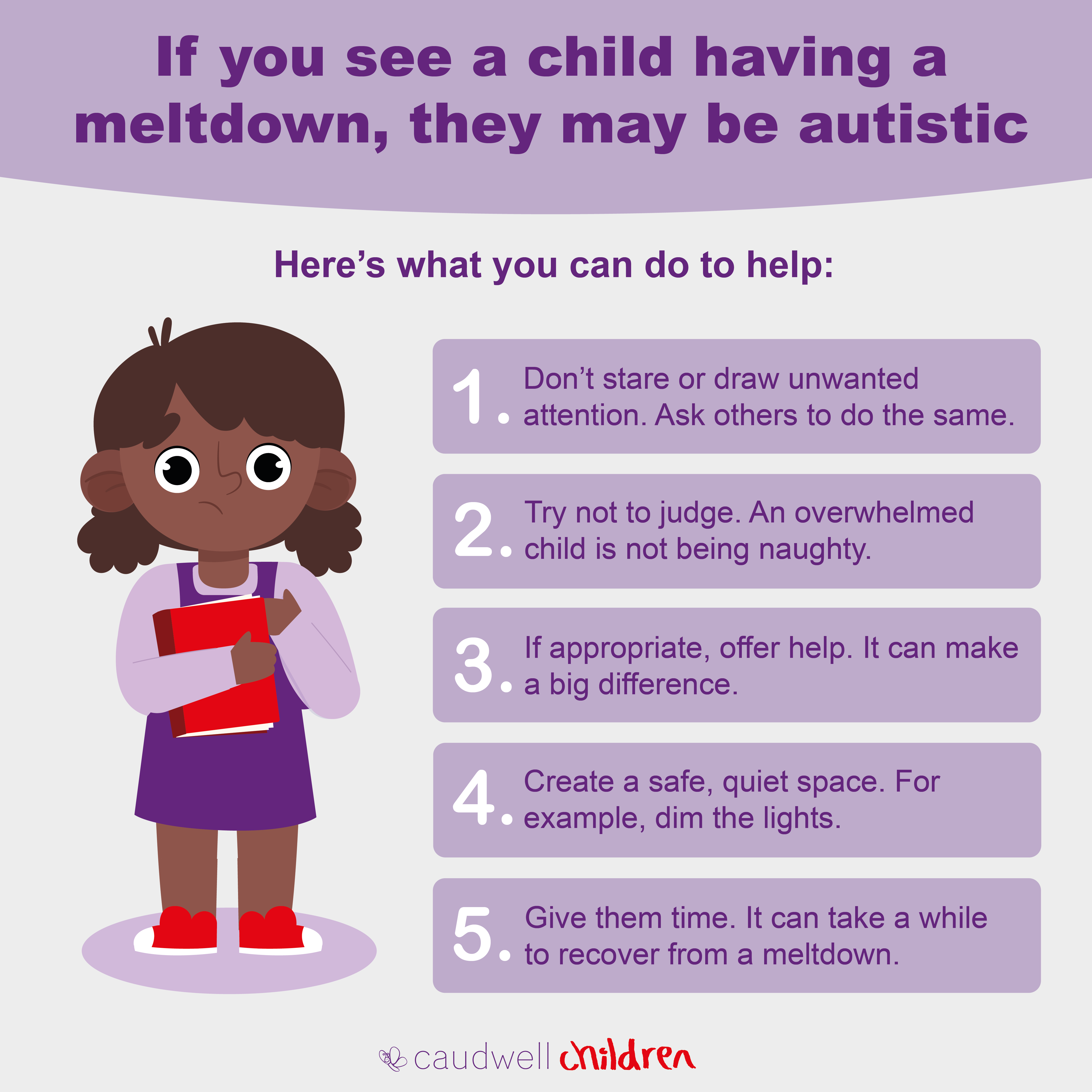Meltdowns: What they are and how to support an autistic child through them
It can often be difficult for people who don’t know much about autism to tell meltdowns and tantrums apart. To the untrained eye it can seem that the behaviours are similar, but they are very different things and it’s important to understand the difference.
What is a meltdown?
A meltdown is a response to an intense and overwhelming situation. A meltdown can include screaming, crying, freezing, laying on the floor, kicking and much more.
Different children may experience different types of meltdowns, they can be verbal (shouting and screaming), physical (kicking and biting), both or they can be more silent and internalised (hurting themselves and refusing to move).
Each child has different triggers for meltdowns. These can be things like changes in routine, not enough or too much sensory input, or an upsetting situation. Sometimes a meltdown may seem like a big reaction to something small, but this doesn’t mean the reason wasn’t important to the child.
Autistic children experience sensory inputs differently to neurotypical (non-autistic) children, things that may seem small to others may have great importance to an autistic child.
A tantrum, on the other hand, is where a child wants a specific outcome and they may have an explosion of emotion in front of others.
What can trigger a meltdown?
Every child is different, so it’s important to know their individual triggers to support them.
Some possible causes of a meltdown could be:
- Feeling overwhelmed – The child may feel like there is too much going on and they are not able to process it all.
- Sensory overload – Autistic children can be under or over sensitive to sensory input such as noise, light, smell or touch. Too much or too little sensory input can be difficult to deal with.
- Feeling misunderstood – Being misunderstood can be frustrating and build up emotion.
- Changes in routine – Routines are often really important to autistic children. Having set ways of doing things creates certainty and reassurance, so changing this can cause distress.
- Communication – Not being able to make themselves understood to the people around them.
With this in mind, we’ve put together 5 helpful tips you can share with others to help them understand meltdowns and support a child who is having a meltdown.
-
Don’t stare
Staring at the child, parent or carer can make them feel worse, especially since many people assume the child is just being ‘naughty’. The child may have no control over their meltdown and the parent or carer will be doing everything they can to support the child.
-
Try not to judge
A meltdown is not a cause of bad parenting, it’s a response to a specific trigger or event. Judging the parent, carer or the child is not helpful to anyone.
-
Offer help where appropriate
The parent or carer may ask for space and or support as needed.
-
Create a safe, quiet space
Ask people to move along, turn off loud music and turn down bright lights – whatever you can think of to reduce the intensity of the situation.
-
Give them time
It may take a while to recover from any of the triggers that caused the meltdown. So wherever the meltdown happens, give them space to do whatever they need to.

Why is this important?
Paul McIlroy, who leads the Autism Service at Caudwell Children, said:
“It can be difficult to differentiate a neurotypical child’s tantrum from an autistic child’s meltdown. They can appear to be similar but the triggers of the two are very different.
“These 5 tips aim to explain how to react when you witness a meltdown in public and in following these it can benefit everyone.”
For more information and to check out all of the support we offer visit our services page.
If you liked this post, check out our Facebook, Twitter and Instagram where we share similar content.
)

)
)
)
)